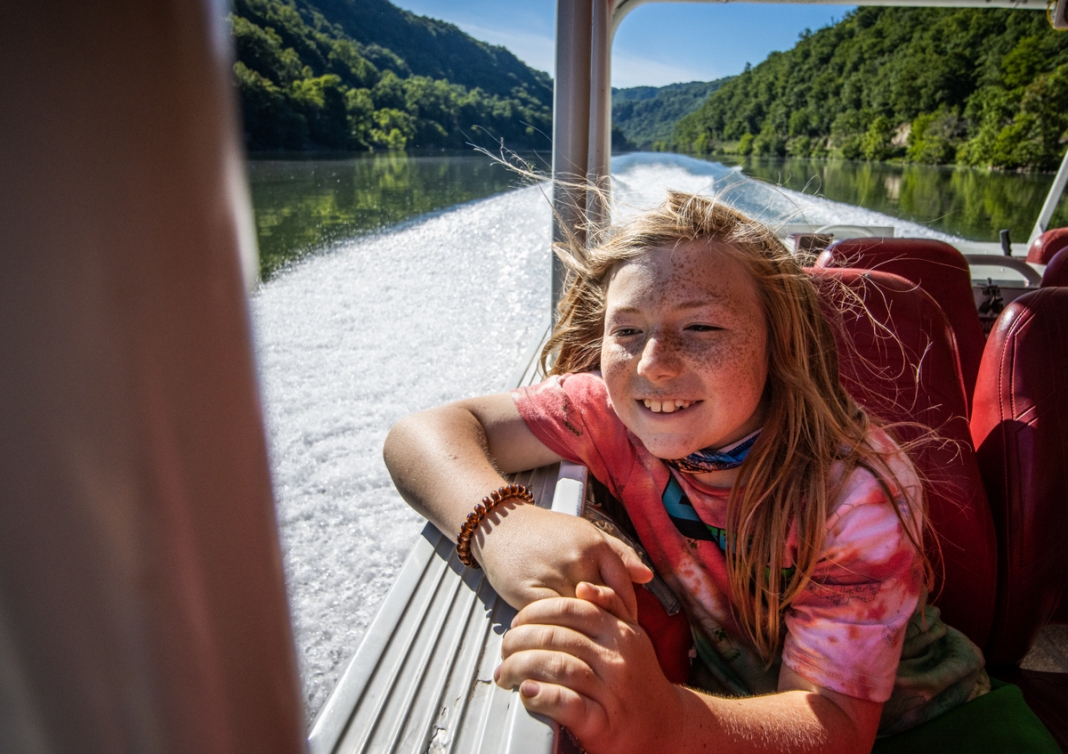HUNTINGTON, W.Va. — One of West Virginia’s newest historical sites is also one of its most unusual. At the heart of the Marshall University campus, a fountain shaped from a mass of green metal rods stretches upward to the sky. A jet of water erupts from its center and empties into a reflecting pool.
Generations of students, faculty, and visitors have pondered the fountain's shape. Is it a tulip? A chalice? Regardless, it holds tremendous meaning to the Marshall community.
The Marshall University Memorial Fountain was added to the National Register of Historic Places on July 19, 2024, though monuments and other commemorative properties generally are not eligible for the designation.
The unique fountain, however, met the qualifications due to its age (a little more than 50 years old) and its historically significant artistic design. This abstract sculpture was dedicated in 1972 to honor the victims of the Marshall Plane Crash from two years earlier.
On November 14, 1970, a charter plane carrying members of the Marshall University football team, their staff, and their supporters crashed into a hillside near Huntington Tri-State Airport. All 75 passengers and crew died.

The tragedy struck a blow to Huntington and the Marshall community. With nearly the entire team and most coaches gone, its football program was nearly dissolved. However, the few surviving players and staff cobbled together a new team of freshmen and walk-ons to play the following season. Their successful efforts to rebuild the team were dramatized in the 2006 film "We Are Marshall."
Soon after the crash, university officials and alumni began exploring ways to respectfully and tastefully memorialize the victims. A new university student center was under construction then, and plans called for a fountain to be installed in front of it. A memorial committee decided to adapt this fountain into a monument that could be seen and enjoyed by everyone on campus.
Much debate centered around the monument's form. One faction wanted a traditional representative sculpture, perhaps of a bison, the school’s mascot.
Others, particularly the university art department, preferred an abstract sculpture—visually unique, timeless, and open to interpretation. The abstract supporters prevailed, and in 1972, the memorial committee hired Italian-American artist Harry Bertoia to create the fountain.
Bertoia (1915-1978) was an internationally recognized abstract artist. Though his works spanned various mediums, his specialty was metal. He crafted jewelry, a line of furniture, tonal sculptures, and larger public installations out of gold, copper, bronze, and other types of metal.
Examples have been featured in the Smithsonian, the Museum of Modern Art, and the 1964 New York World’s Fair. Bertoia specialized in creating metal sculptures that looked organic or had interactive qualities. Some sculptures resembled plants, while others made noise when touched.
Marshall’s Memorial Fountain was one of only five public fountains Bertoia made. He spent months bending and welding a series of copper rods to create a remarkably lifelike shape.
The finished product stands nearly thirteen feet tall and weighs some 6,500 pounds. He accepted only $25,000 in payment, a relatively modest sum even by 1970s standards.
Because of its role in memorializing the plane crash victims, the fountain’s lively, organic appearance perhaps took on greater importance. Bertoia and his supporters explained that the fountain was meant to celebrate life rather than reflect death and mourning.
In oft-quoted remarks, he stated that his sculpture symbolized “the living, rather than commemorating Death itself in the waters of life, rising, renewing, reaching to express upward growth, immortality, and eternity.”
The fountain was formally dedicated on November 12, 1972, and was received positively by the community. Almost immediately, it became a popular gathering spot for students. In its early years, some students waded in the fountain’s reflecting pool. A few even conducted baptisms in it.
The installation of the fountain also inaugurated Marshall University’s annual Fountain Ceremony. Each year, on November 14, the anniversary of the crash, students, university officials, the football team, and families of the plane crash victims gather at the fountain for a solemn memorial service. Speeches, singing, and the laying of 75 white roses, one for each victim, take place during the ceremony.
The water is shut off during the ceremony, leaving the fountain dry all winter. It is turned back on during a parallel ceremony held annually in April. Attending the ceremony is considered a rite of passage for Marshall students.
Today, the fountain has become Marshall University's defining symbol. It's frequently depicted on merchandise and in marketing campaigns and was featured prominently in the "We Are Marshall" movie.
People walking through campus—whether longtime staff or first-time visitors—are hard-pressed to pass the fountain without contemplating its serene nature and the countless memories it embodies.
Sign up to receive of FREE copy of West Virginia Explorer Magazine in your email weekly. Sign me up!



